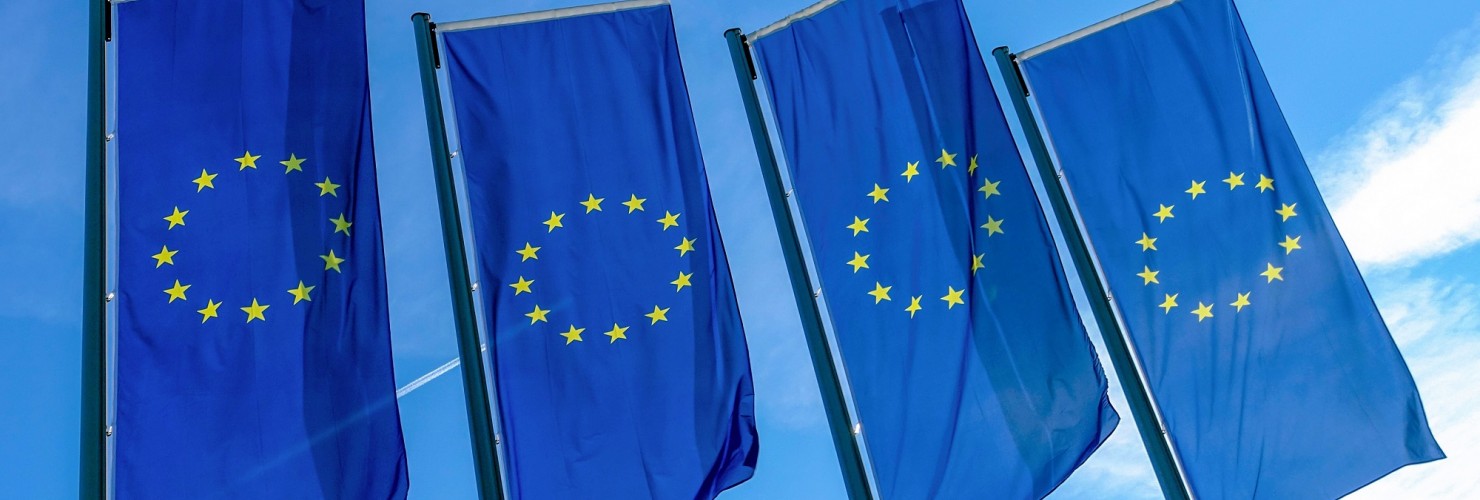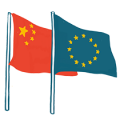

EU-China Opinion Pool: The new EU connectivity initiative - Defining success
The EU announced plans for a new initiative to rethink its global connectivity efforts – partially in response to China’s Belt and Road Initiative (BRI). The EU’s 2018 Connectivity Strategy defined the sustainable, comprehensive and rules-based European approach to connectivity, but it is yet to bring about substantial results. The renewed push comes amid a wider momentum for connectivity initiatives captured in G7 discussions on Building Back Better World (B3W).
In this round of our EU-China opinion pool, we ask several experts from fellow institutions and MERICS to answer the question:
What would success look like for the new European connectivity initiative?
Janka Oertel
Director of Asia Programme and Senior Policy Fellow at the European Council on Foreign Relations
The European connectivity initiative has been long in the making and is in many ways the most obvious response to the challenges the EU is confronted with under the changing geopolitical conditions. When moving forward on the initiative now, there are at least three straightforward outcomes that could serve as criteria for what constitutes a success.
Firstly, any new initiative must rapidly lead to an increase in actual high-quality infrastructure projects in countries of strategic concern to EU interests – particularly in the Indo-Pacific region. While this may sound trivial, only if actual projects clearly labeled as being the result of the EU’s new infrastructure push are introduced quickly will it gain any steam and traction.
Secondly, this traction will need to be translated into making the EU a much more visible connectivity partner, which would be another key success factor. To achieve this, European activity in this realm needs to be capitalized on in terms of diplomatic and economic opportunities by a straightforward outreach and communication campaign.
Thirdly, the initiative needs to create complementarity and cooperation among market economies to improve competitiveness with China. Only if the EU approach is sensibly aligned with the policies and initiatives of the US, Japan and other partners, with common or harmonized standards and joint financing opportunities through national as well as international development banks, will it leverage its full potential. This could enable companies from Europe, the US, Japan and other market economies to engage in higher risk or less immediately financially profitable projects with adequate backing and thus provide a real alternative to China’s Belt and Road endeavors.
Sven Biscop
Director of the Europe in the World Programme at Egmont the Royal Institute for International Relations
The first measure of success of the EU’s connectivity initiative would be if people would start talking about it. For now, China sets the tone of the debate: everybody knows the Belt and Road Initiative. Yet in many countries, when all efforts by all EU institutions and EU Member States are taken into account, Europe actually is a far more significant player than China. But if Europeans themselves are usually unaware of that, they cannot expect others to know.
More will be needed than joining up existing efforts, however, though it is a necessary first step. Only a clear strategic purpose can give direction to the European initiative. Moreover, new “flagship” projects are needed to mark the opening of a new phase in the EU’s connectivity strategy.
At the same time, the EU must be careful not to overload the connectivity agenda. It is an instrument to ensure a level economic playing field, enabling third countries to maintain their sovereignty by building deep economic and political relations with various great powers instead of putting all their eggs into one basket, while enabling the EU’s standard-setting power to have it full effect. But one cannot expect connectivity to lead to the reform of a country’s political system. Where the EU does have an advantage, somewhat counterintuitively, is in security and defense. While China mostly remains reluctant to engage, the EU can offer concrete military cooperation to partners that have legitimate security needs.
Jakub Jakóbowski
Coordinator of the Connectivity in Eurasia Project and Senior Fellow with the OSW China Program
With China on board, global connectivity has become inherently competitive and geopolitical. A success in this competition demands a paradigm shift in the EU’s development finance, and a thorough reform of the existing financing tools. Thinking about connectivity only in terms of safeguarding norms and standards – while necessary – is too narrow. We should think of building infrastructure as a way to functionally integrate different developing regions with the EU, increasing EU’s economic and political “gravitational pull.”
In practical terms, the EU should indeed use its vast financial resources and look for high impact and visible infrastructure projects – but it should not stop there. Additional initiatives on stimulating European investment and trade should follow, along with mechanisms that will build functional links with EU’s infrastructural networks (such as TEN-T extension or the Energy Community initiative). In other words, infrastructure should be structured so as to integrate specific countries and regions – be it the Western Balkans, the Eastern Partnership, North Africa or India – with the European industrial value chains, EU’s digital ecosystem, and energy market. Otherwise, other actors – such as China or Russia – will fill the void.
BRI’s global appeal came not only from cheap infrastructure financing Beijing provided, but also a wider promise of investment, trade and technological links, integrating developing countries with the Chinese industrial core. Connectivity that brings growth and integration with the global economy – and not necessarily “building back” the old development finance status quo – is what the Global South is looking for now.
Grzegorz Stec
EU-China Analyst at MERICS

The 2018 EU-Asia Connectivity Strategy was a conceptual breakthrough. To be considered a success, the new connectivity initiative would need to be an operational breakthrough and achieve three goals:
Clarify the message and the messenger: Externally, the new EU connectivity brand would need to become recognizable and positively associated by elites in the European neighborhood and the Global South. The brand would need to be actively promoted by member states labelling their own initiatives as part of “Team Europe.” Internally, the EU would need to solidify coordination of connectivity-related initiatives dispersed between DGs and strengthen the position of the EU-based connectivity advocate and coordinator. This could be done by upgrading the post of Ambassador at Large for Connectivity in the EEAS to a Commissioner status, similar to the Commissioner for Climate Action.
Become a global connectivity broker: The EU developed connectivity partnerships with Japan, India and ASEAN (currently being negotiated). Future partnerships should be formed also outside of Asia, particularly in Africa, and involve launching joint high-profile infrastructure projects. The Europa Connectivity Forum should be relaunched as a high-level platform for coordinating international connectivity initiatives that meet the European connectivity criteria of being sustainable, comprehensive and rules based.
Ensure EU businesses benefit: Through connectivity partnerships the EU should ensure resilience of the free market rules-based global system that China seeks to transform. Maintenance of this system is necessary for European businesses to thrive. Furthermore, the EU private sector should be proactively involved to ensure the initiative aligns with the needs of EU’s businesses. If they then also embrace the initiative’s branding, this would be a clear sign of success.
Maaike Okano-Heijmans
Senior Research Fellow at the Clingendael Institute
It’s the year 2050 and we’re looking back on a successful European connectivity initiative. First, the initiative ensured that European norms have continued to underpin the global economic, political and security orders on land, at sea and in the digital space. These spaces remained open, rules-based and primarily served the interests of the people rather than those of the state or big business.
This success came after an initial focus on regions where the EU’s interests were the highest, in its own neighborhood and in the Indo-Pacific, China’s backyard. Up until then, China’s growing presence and clout challenged European interests and liberal norms.
Political leaders all around Europe threw their weight behind the connectivity agenda. Connectivity became visible thanks to a clear narrative and projects that catered to public well-being. Projects were developed in partnerships with businesses and civil society organizations, tailoring European ideas and solutions to local circumstances. Substantial funds allocated to digital development cooperation for capacity building, secure connections and regulatory dialogues were instrumental to this success.
The global presence of European businesses made the EU a leading player in the digital and green economy domains, where it continued to be respected as a referee with human-centered approaches. European governments and businesses cooperated with EU institutions in policies that nurtured and maintained start-ups and champions and financial instruments helped steer private sector presence abroad. These companies set democratic and inclusive standards through their global operations. European civil society organizations worked with partners in third countries to promote transparency and decentralized approaches to the digital space from bottom-up.




